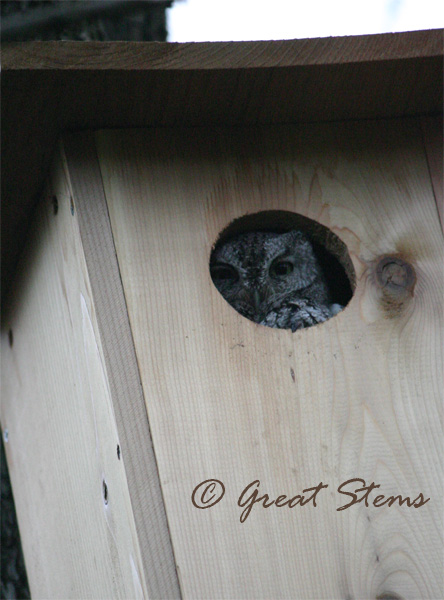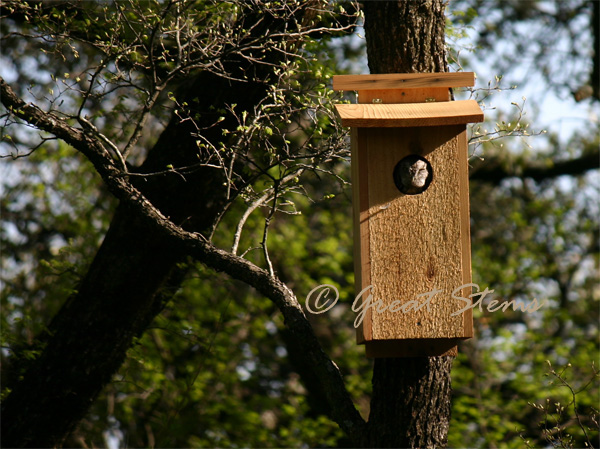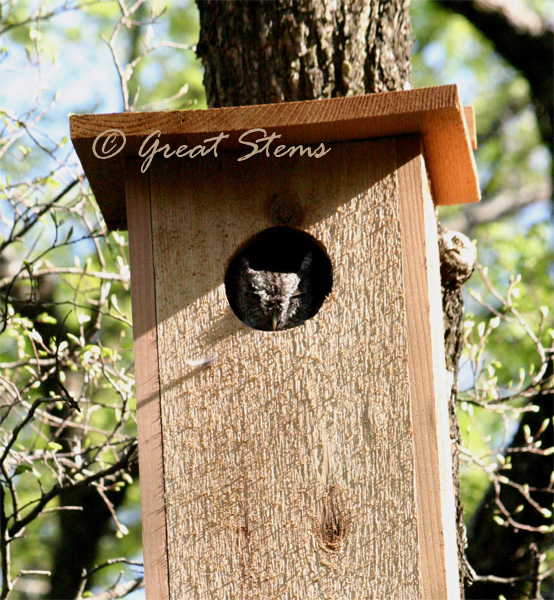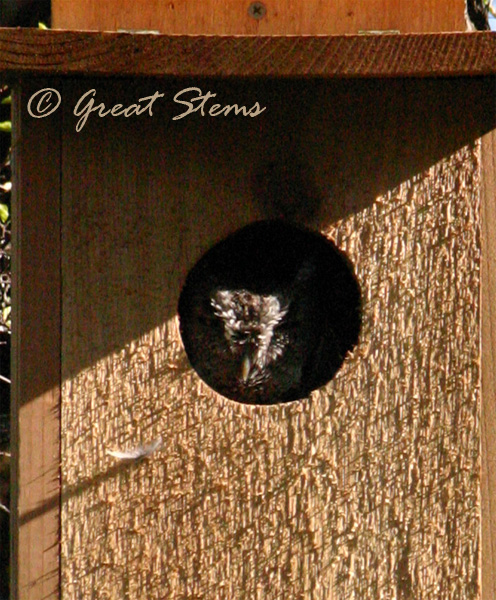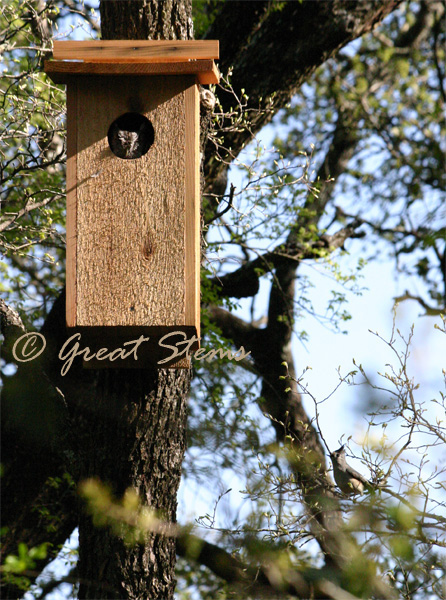Say what?!!
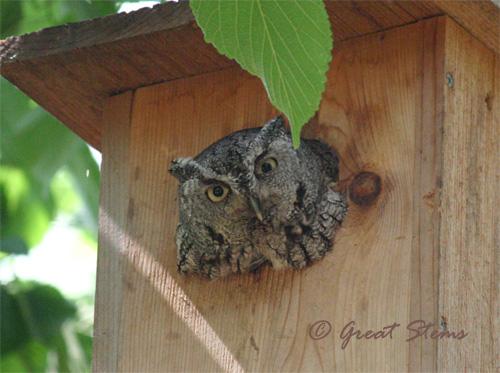 That owl up there is driving us crazy, though I'm sure it would say the same about us. All day long it sticks its head out of the nesting-box hole and does NOTHING. Nothing except occasionally stick its head out farther to see what we're up to in the yard (which usually is us sticking our heads around trees to see what the owl is doing). Just go ahead and show us some baby owlets or bring in a rat or make an eerie screech owl noise or something, would you? We're so happy our screech owl is here, but it's just weird that it hangs out of the hole all day long.
That owl up there is driving us crazy, though I'm sure it would say the same about us. All day long it sticks its head out of the nesting-box hole and does NOTHING. Nothing except occasionally stick its head out farther to see what we're up to in the yard (which usually is us sticking our heads around trees to see what the owl is doing). Just go ahead and show us some baby owlets or bring in a rat or make an eerie screech owl noise or something, would you? We're so happy our screech owl is here, but it's just weird that it hangs out of the hole all day long.
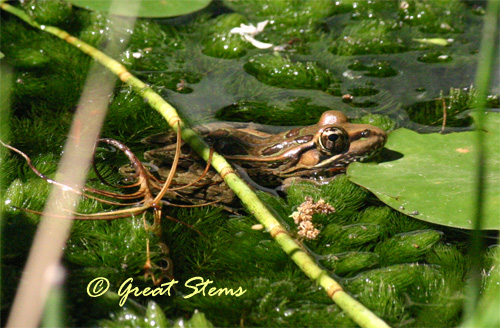 That being said, I have a feeling I've been unnecessarily blaming our frogs for causing the odd shortage of our once-abundant toads. Most likely I should be blaming the screech owl. After all, we've apparently set up a rather nice buffet table for the owl, which watches over the pond from its vantage point up in the nesting box. The male toads come out at night, innocently croaking loudly to attract a potential mate, and it's just possible that their call instead acts like a beacon to bring the silent predator from above right to them.
That being said, I have a feeling I've been unnecessarily blaming our frogs for causing the odd shortage of our once-abundant toads. Most likely I should be blaming the screech owl. After all, we've apparently set up a rather nice buffet table for the owl, which watches over the pond from its vantage point up in the nesting box. The male toads come out at night, innocently croaking loudly to attract a potential mate, and it's just possible that their call instead acts like a beacon to bring the silent predator from above right to them.
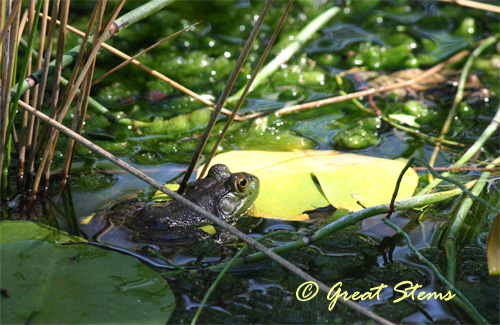
Check out who this green frog is watching -- someone better be careful!
Of course, it's entirely possible the pond frogs really are to blame -- they are certainly not above cannibalizing (toads are actually frogs, you know, and frogs will eat frogs). It appears we have created the ultimate frog haven in our hot-tub pond. The frogs spread themselves out across the water (so as to not get too close to their hungry neighbor, I assume), and then they wait for whatever moving morsel dares to venture close. I'm still trying to determine the species we have -- at the very least, we have both American Bullfrogs and Southern Leopard frogs, but the markings are odd on a couple of them.
And they are all getting big. The largest bullfrog is getting downright scary (cue "Jaws" music).
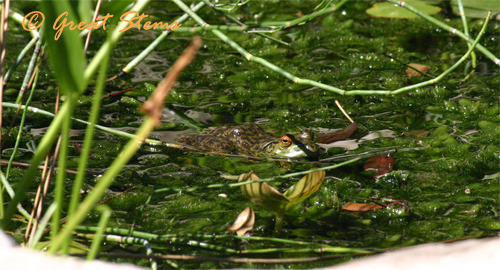
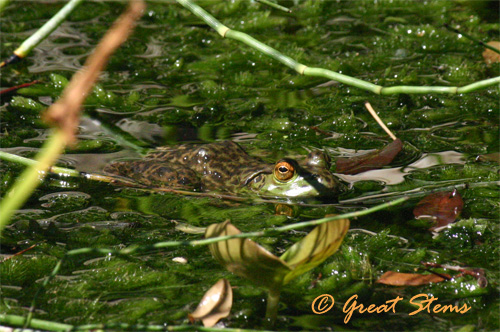
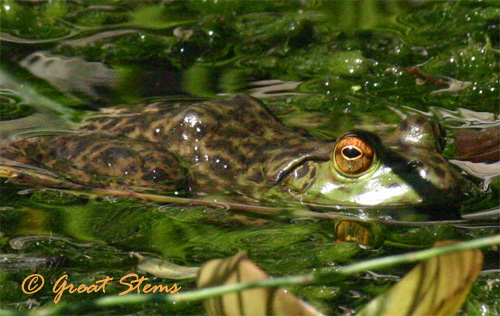
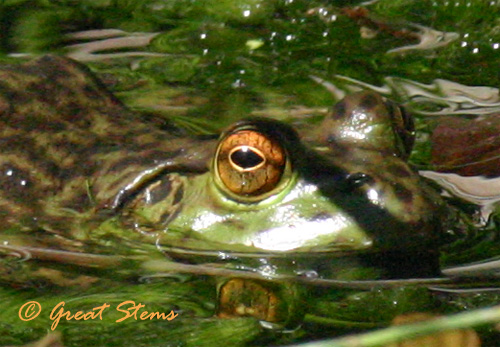 I still have to get in the pond to get acorns and such out of it -- my spring cleaning is way overdue -- don't I look forward to it with Gigantic Freaka-Frogazoid there joining me! I'm just kidding -- I love frogs.
I still have to get in the pond to get acorns and such out of it -- my spring cleaning is way overdue -- don't I look forward to it with Gigantic Freaka-Frogazoid there joining me! I'm just kidding -- I love frogs.
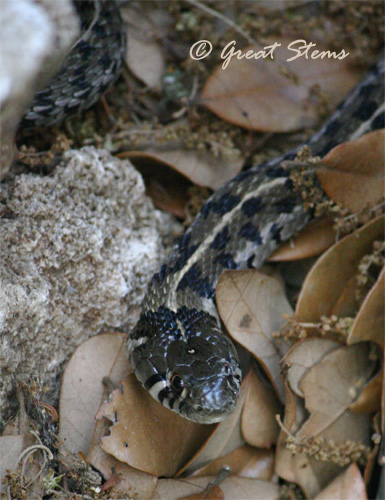 Of course, also on the toad hunt might be this Checkered Garter Snake -- it has a perfect waiting spot among the pond rocks. Our garden habitat is an ecosystem at work, that's for sure. All the same, I suggest all toads immediately head to our front-yard pond. It's smaller, but a little toad-safer for the time being.
Of course, also on the toad hunt might be this Checkered Garter Snake -- it has a perfect waiting spot among the pond rocks. Our garden habitat is an ecosystem at work, that's for sure. All the same, I suggest all toads immediately head to our front-yard pond. It's smaller, but a little toad-safer for the time being.
Here's one toad we found alive and well -- hop and hide, little one! Hop and hide!
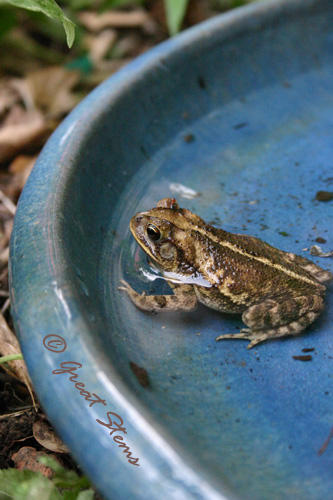
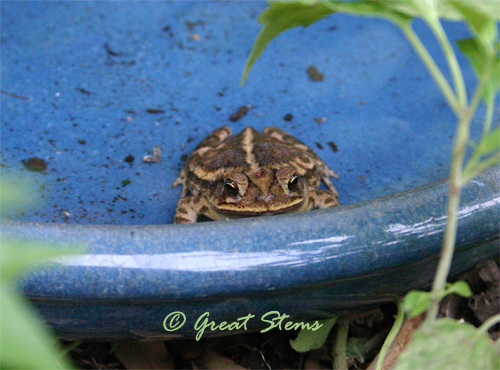
Nearby, a cardinal flew in for a seed and a close-up. Blue Jays splash in the birdbaths, hummingbirds dance in sync together, doves play follow-the-leader... and still our screech owl sits in its nesting-box hole.
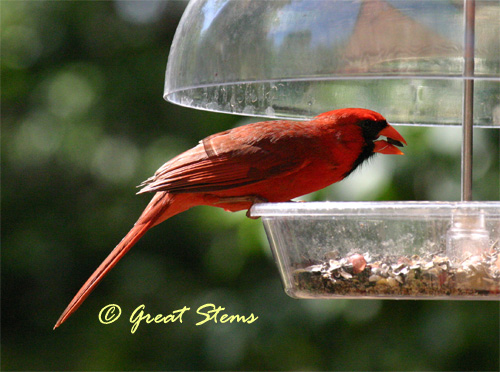 All around town, the wildlife and native plants are doing their best to handle drought conditions. Check out this beauty seen at McKinney Roughs -- it's a Great Purple Hairstreak.
All around town, the wildlife and native plants are doing their best to handle drought conditions. Check out this beauty seen at McKinney Roughs -- it's a Great Purple Hairstreak.
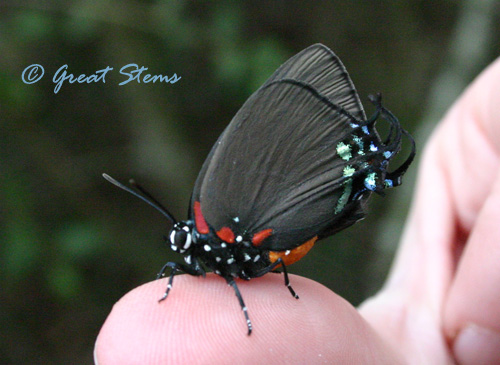 Don't see any purple on it? That's because there isn't any. By the way, this little beauty's host plant is Mistletoe -- consider it a plus side to the parasitic plant.
Don't see any purple on it? That's because there isn't any. By the way, this little beauty's host plant is Mistletoe -- consider it a plus side to the parasitic plant.
This next image is of a beautiful little Southern Emerald Moth -- however, its wings were up instead of laying flat, and it didn't seem able to fly, poor thing. This is the second time I've seen this moth in the same condition at the same locale, Hornsby Bend.
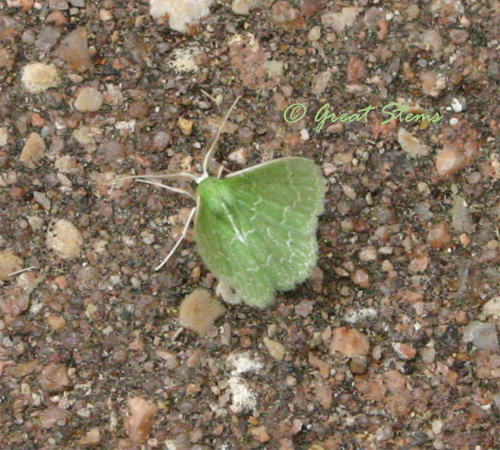
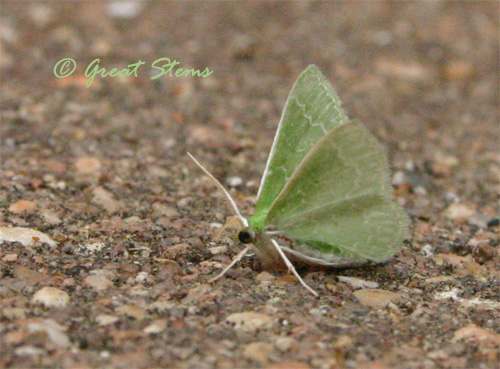 The Retamas (also called Jerusalem Thorn) lining the ponds at Hornsby Bend are in full bloom right now. These airy-yet-thorny native Texas plants tend to spread when they get plenty of water, but the bees and birds sure love them. It's understandable. Beautiful yellow blooms and thorns for protection -- sounds great to me.
The Retamas (also called Jerusalem Thorn) lining the ponds at Hornsby Bend are in full bloom right now. These airy-yet-thorny native Texas plants tend to spread when they get plenty of water, but the bees and birds sure love them. It's understandable. Beautiful yellow blooms and thorns for protection -- sounds great to me.
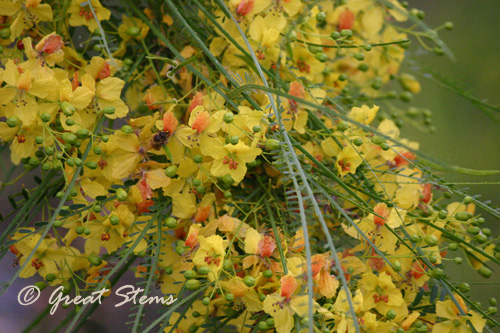 Bees, generally speaking, do love the color yellow. Bees visiting Prickly Pear blossoms go a little crazy with it -- they act almost drunk.
Bees, generally speaking, do love the color yellow. Bees visiting Prickly Pear blossoms go a little crazy with it -- they act almost drunk.
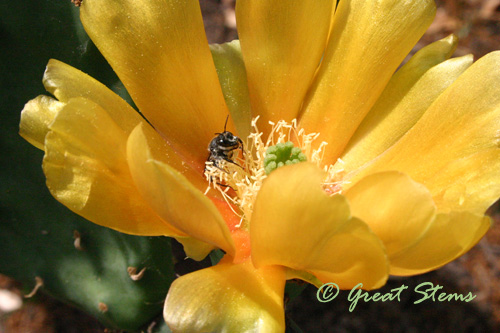
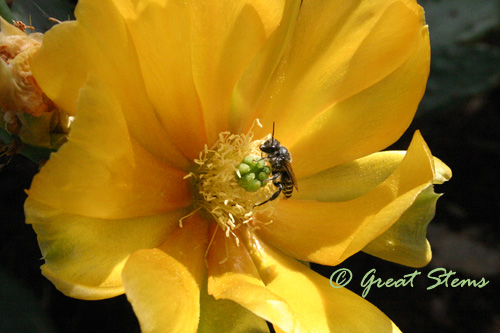 But the winner of the bee-attracting flowers right now is the blooming century plant down at Natural Gardener.
But the winner of the bee-attracting flowers right now is the blooming century plant down at Natural Gardener.
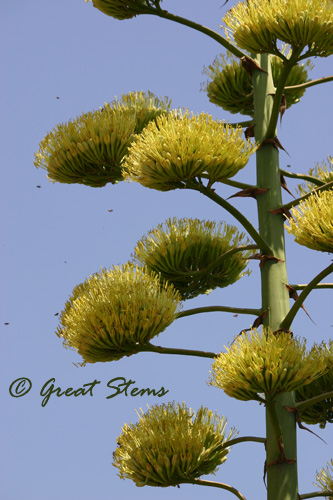 I think several hives of honeybees came to visit.
I think several hives of honeybees came to visit.
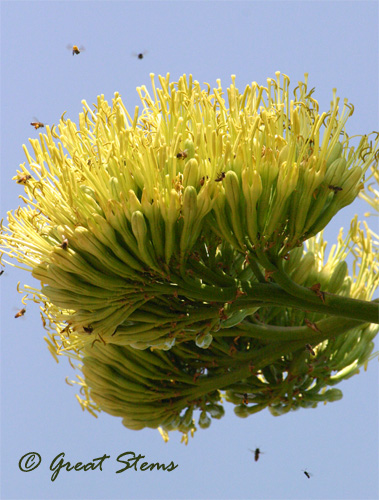
Too bad I couldn't climb up there to get a closer look. To put the height in perspective, take a look at this:
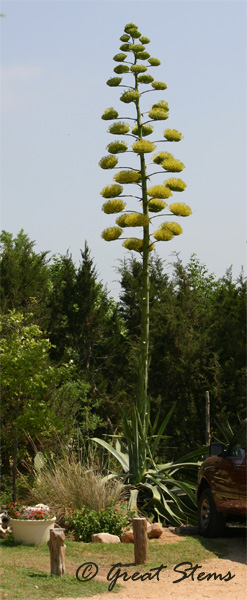
Time to get back out in the garden while the temperatures are still pleasant with our temporary cold front -- hopefully more wildlife will join me!
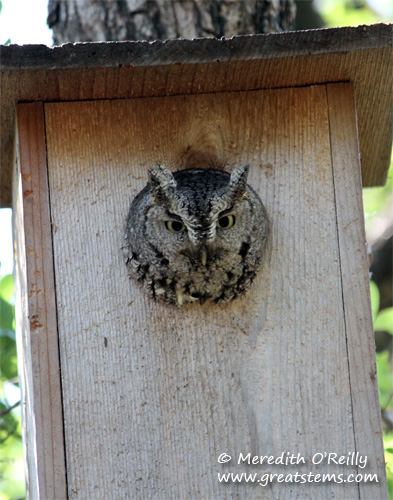 She switched houses, too -- opting for the house in the back of the yard instead of the side. I think it was a fine choice for her to select the other apartment -- a woman always has the right to change her mind and also to rearrange furniture! Or in this case, just plain move. Though she's on a tree that sways in the wind a lot more, she sure gets a good view of everything going on in the yard.
She switched houses, too -- opting for the house in the back of the yard instead of the side. I think it was a fine choice for her to select the other apartment -- a woman always has the right to change her mind and also to rearrange furniture! Or in this case, just plain move. Though she's on a tree that sways in the wind a lot more, she sure gets a good view of everything going on in the yard.
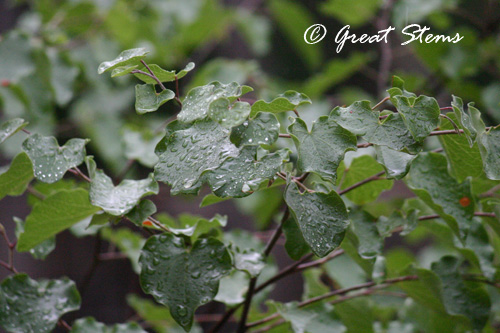
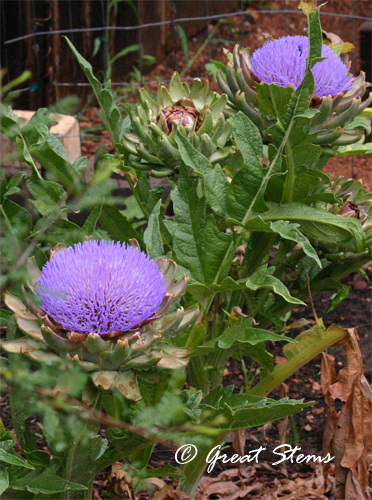
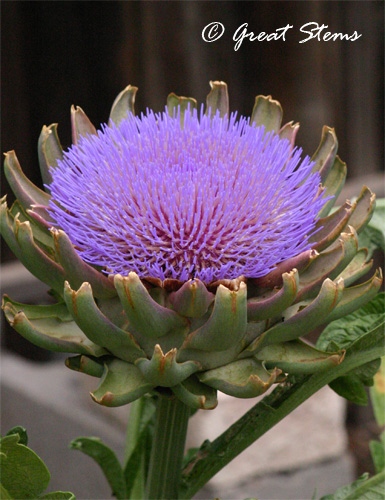
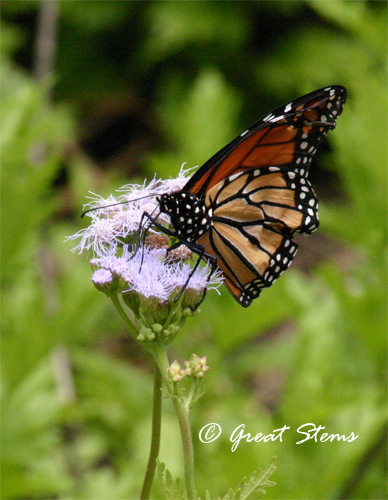
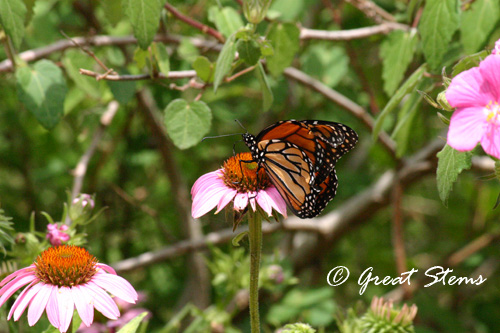
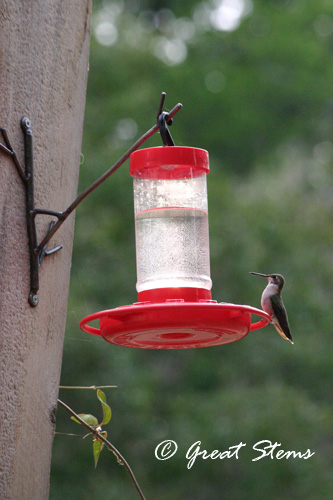
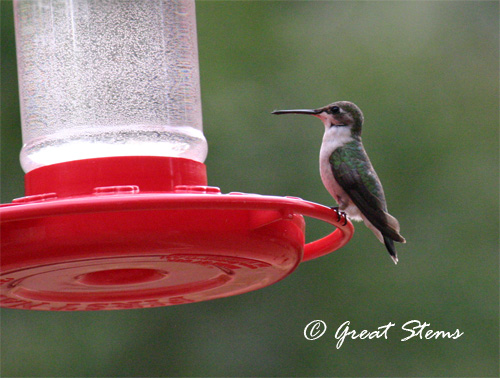
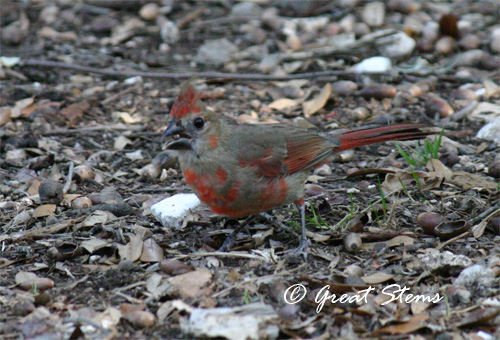
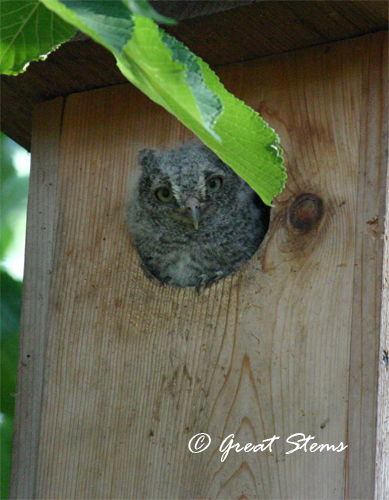
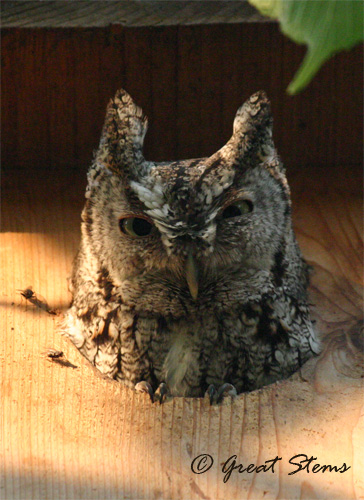
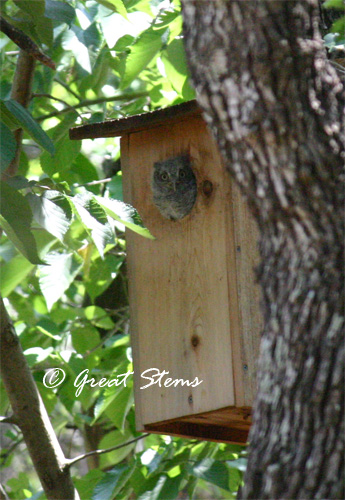
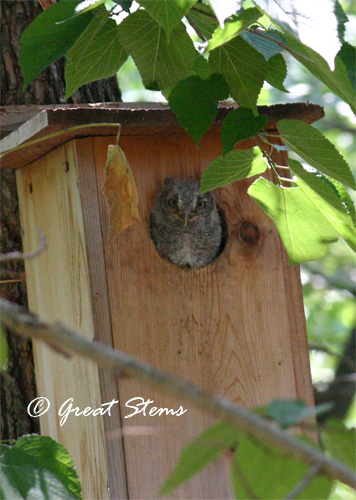
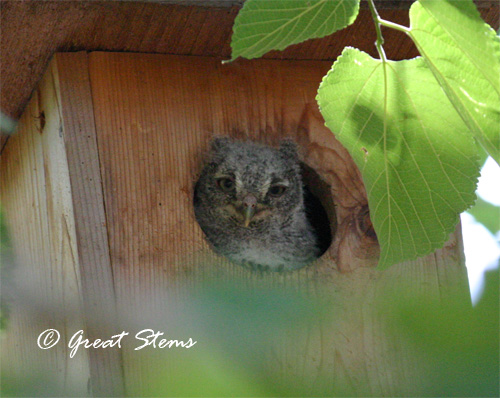




















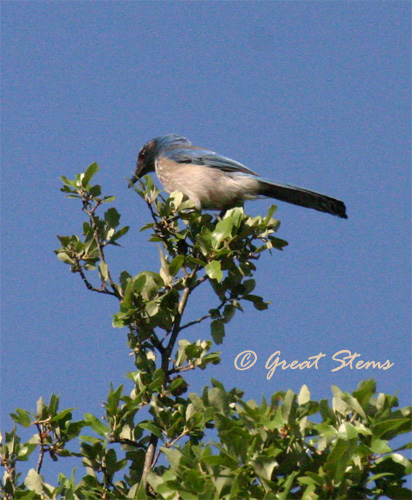
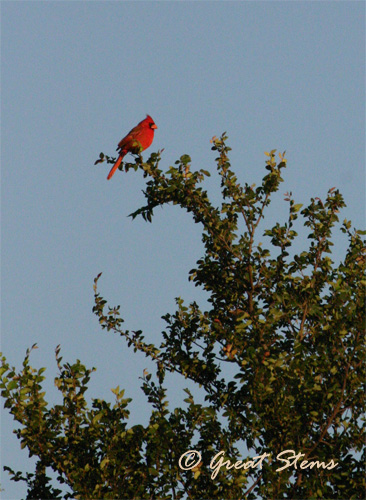
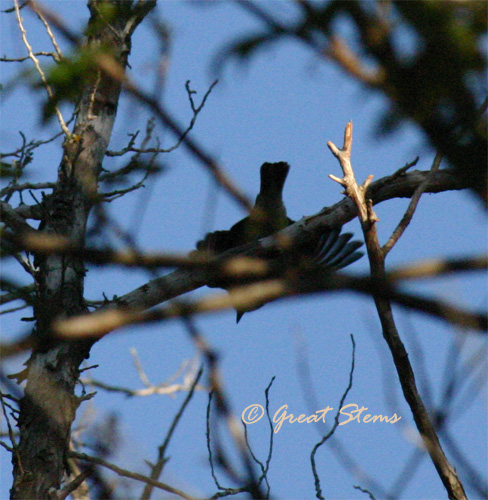
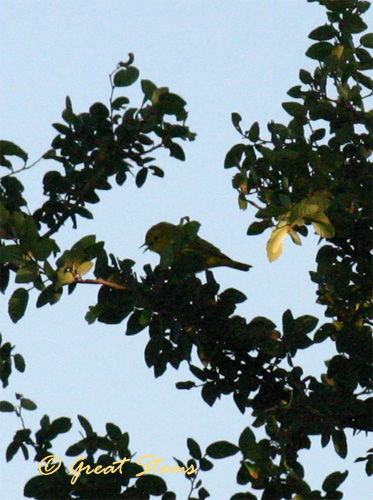

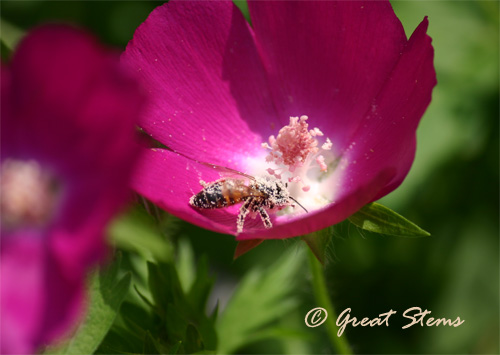
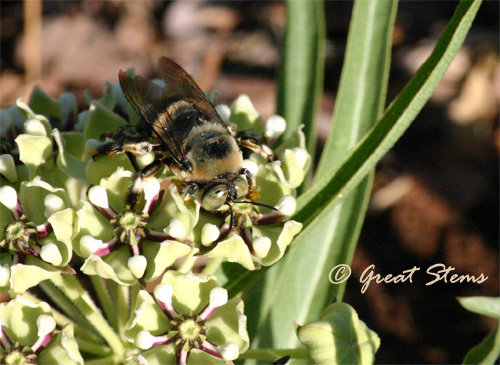
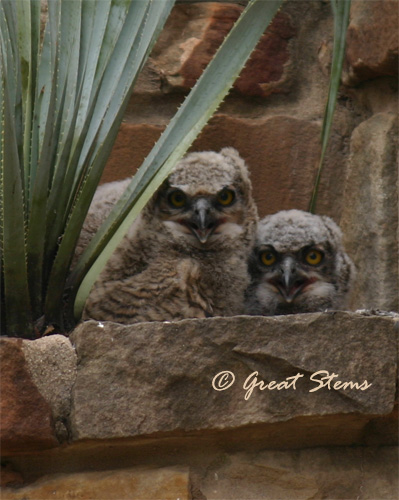
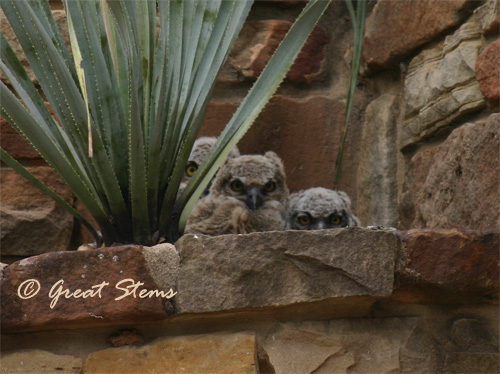
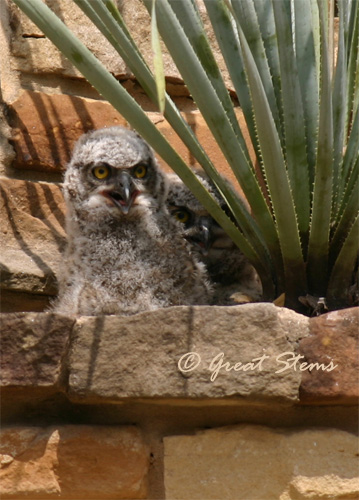
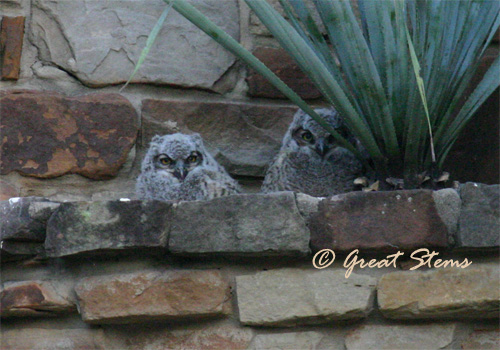
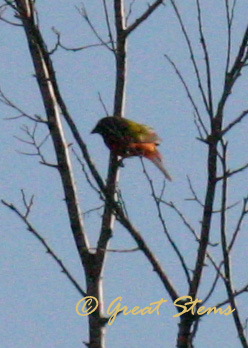
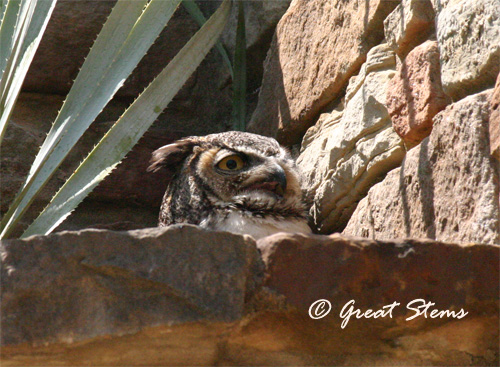
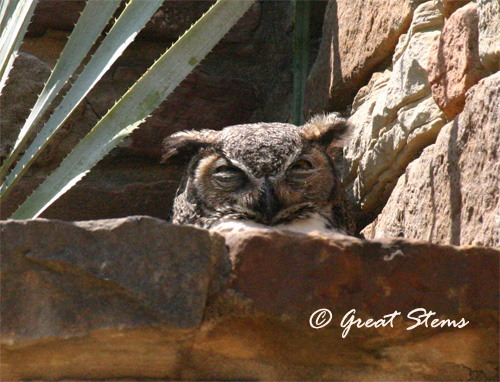
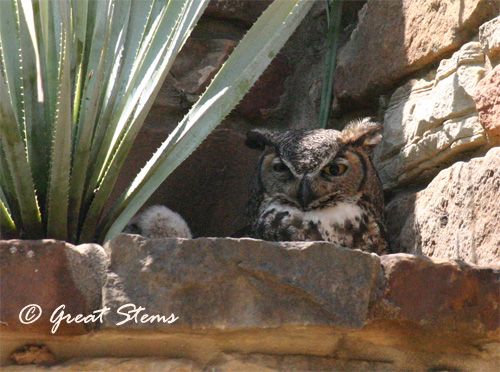
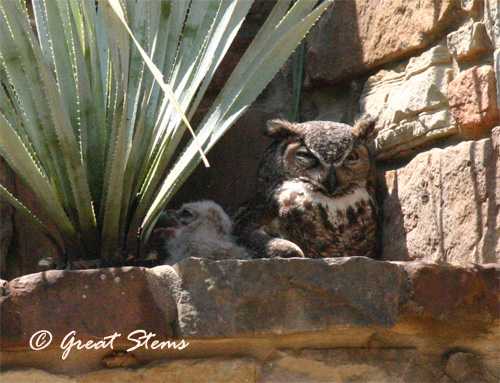
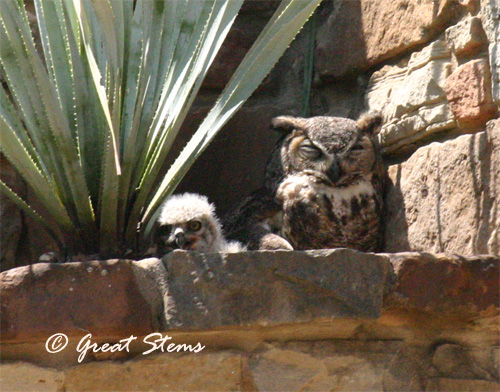
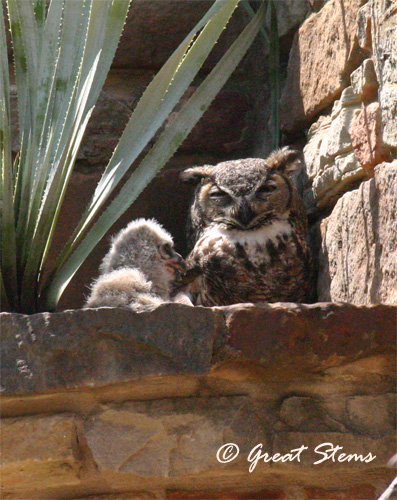
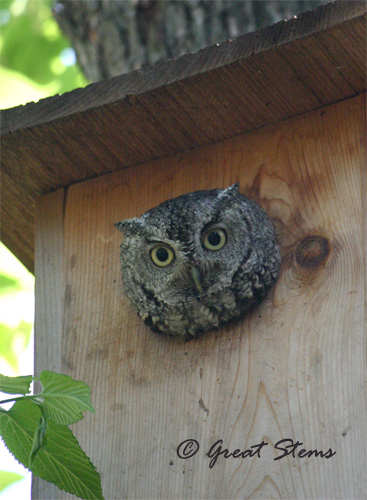
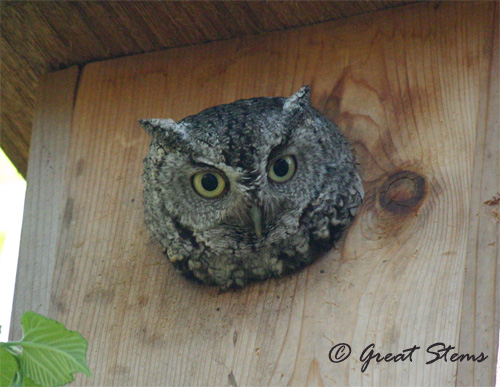
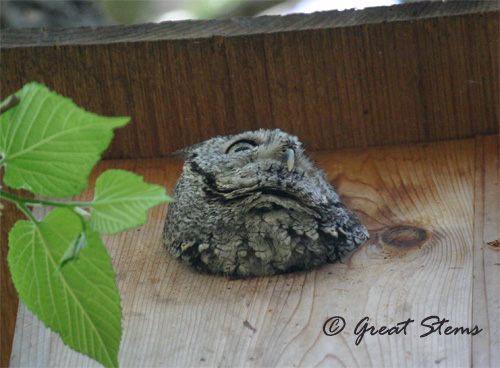
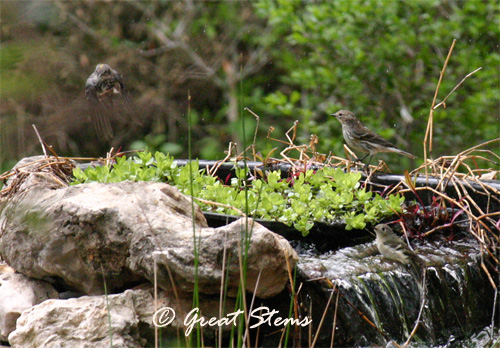
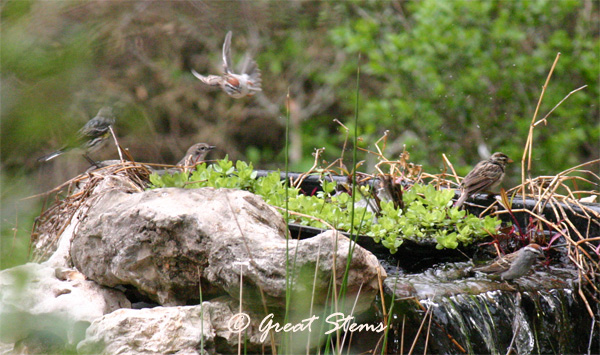
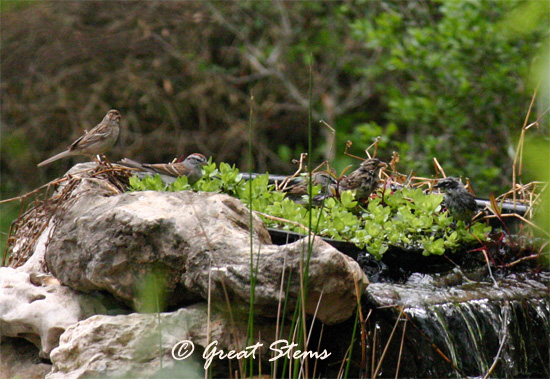
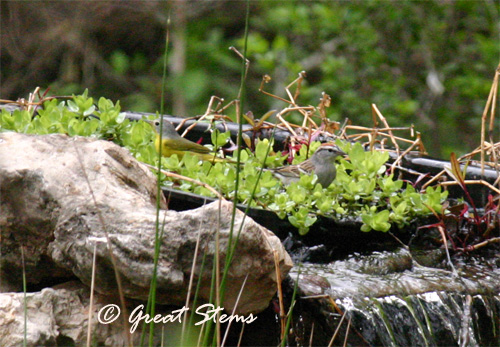
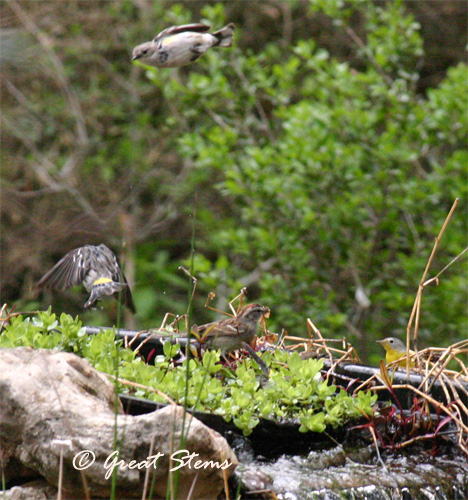
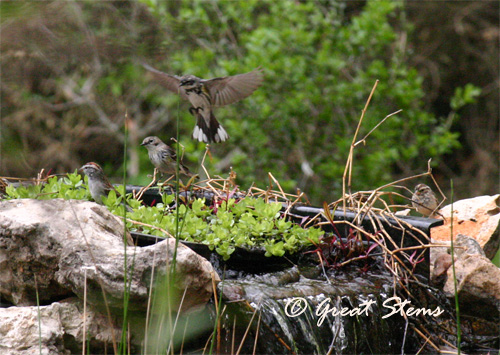 The flock was only here but briefly, but those few minutes made us so happy that we had a waterfall to offer them.
The flock was only here but briefly, but those few minutes made us so happy that we had a waterfall to offer them.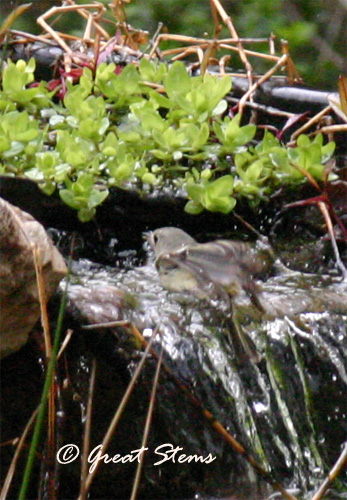
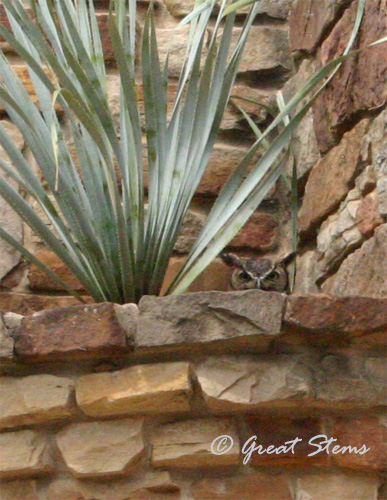
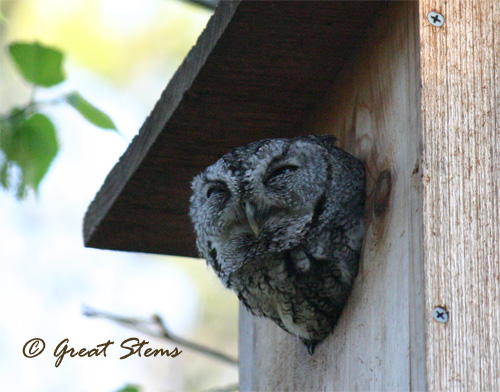
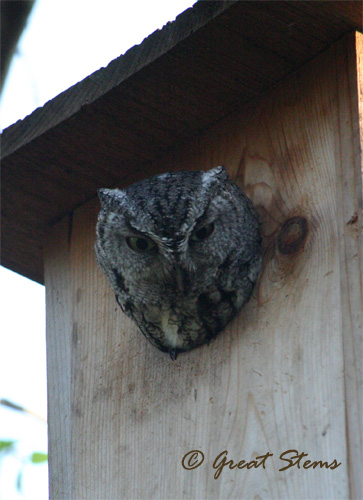
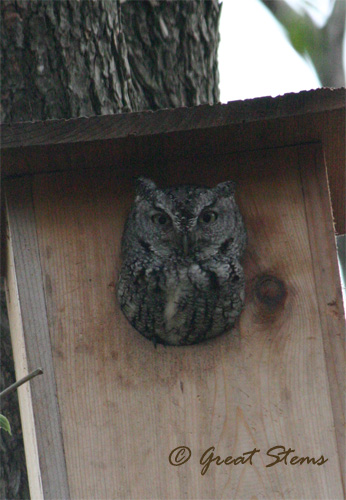
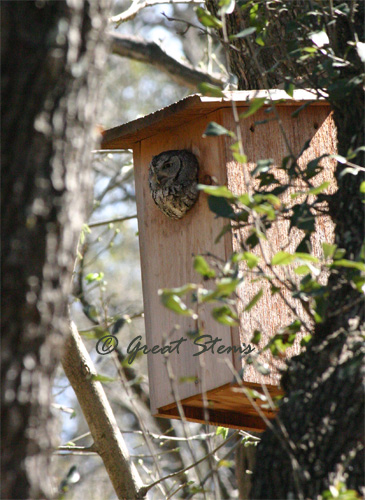
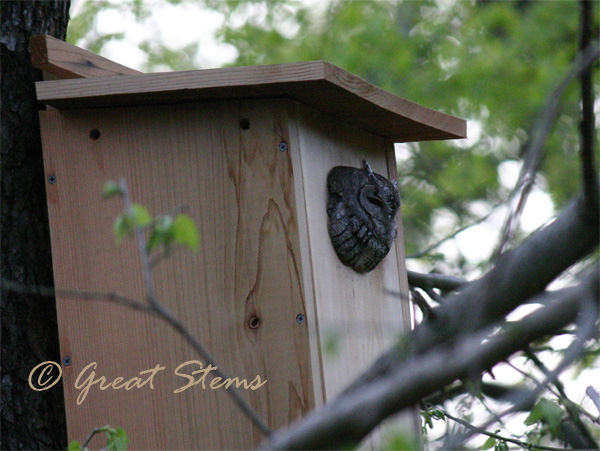
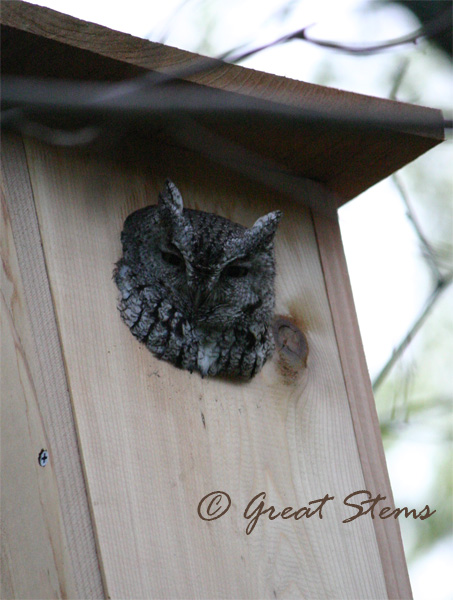
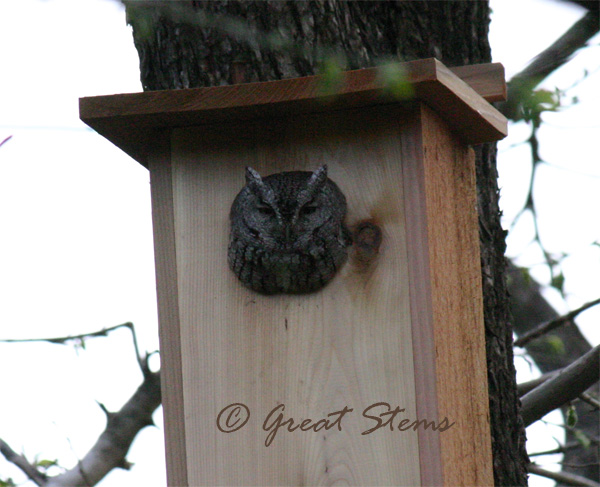 If this really is an owl couple we've got occupying our two owl houses, then it supports the idea that having two houses is more likely to attract owls sooner. It sure worked in our case.
If this really is an owl couple we've got occupying our two owl houses, then it supports the idea that having two houses is more likely to attract owls sooner. It sure worked in our case.